#Kenya Tea Industry
Explore tagged Tumblr posts
Text
Ways to Help Tea Farmers for Sustainable Tea Farming in Kenya
Explore the challenges and opportunities in Kenya’s tea industry as smallholder tea farmers face rising costs, corruption, and the need for sustainable practices. Discover how government support can revitalize this vital sector. Kenya’s tea industry is a key player in the global market, but smallholder farmers are struggling. Learn about the impact of rising costs, corruption, and the potential…
#Agricultural Innovation#climate change#community impact#cooperative farming#corruption in tea sector#crop diversification#direct tea sales#economic impact#fair compensation#farmer empowerment.#farmer training#government support#Kenya Tea Industry#KEPHIS certification#market demands#rising costs#Rural development#smallholder farmers#smallholder income#sustainable practices#tea cultivation#tea exports#tea farming challenges#tea farming sustainability#tea industry reforms#tea market trends#tea production#technology in farming#transparency in agriculture#value-added opportunities
0 notes
Text
Kenyan tea pickers are destroying machines brought in to replace them during violent protests that highlight the challenge faced by low-skilled workers as more agribusiness companies rely on automation to cut costs. At least 10 tea-plucking machines have been torched in multiple flashpoints in the past year, according to local media reports. Recent demonstrations have left one protester dead and several injured, including 23 police officers and farm workers. The Kenya Tea Growers Association (KTGA) estimated the cost of damaged machinery at $1.2 million (170 million Kenyan shillings) after nine machines belonging to Ekaterra, makers of the top-selling tea brand Lipton, were destroyed in May. In March, a local government taskforce recommended that tea companies in Kericho, the country’s largest tea-growing town, adopt a new 60:40 ratio of mechanized tea harvesting to hand-plucking. The taskforce also wants legislation passed to limit importation of tea harvesting machines. Nicholas Kirui, a member of the taskforce and former CEO of KTGA, told Semafor Africa 30,000 jobs had been lost to mechanization in Kericho county alone over the past decade. "We did public participation in all the wards and with all the different groups, and the overwhelming sentiment we were hearing was that the machines should go," Kirui said. In 2021, Kenya exported tea worth $1.2 billion, making it the third-largest tea exporter globally, behind China and Sri Lanka. Multinationals including Browns Investments, George Williamson and Ekaterra — which was sold by Unilever to a private equity firm in July 2022 — plant on an estimated 200,000 acres in Kericho and have all adopted mechanized harvesting. Some machines can reportedly replace 100 workers. Ekaterra's corporate affairs director in Kenya, Sammy Kirui, told Semafor Africa that mechanization was “critical” to the company’s operations and the global competitiveness of Kenyan tea. As the government taskforce established, one machine can bring the cost of harvesting tea down to 3 cents (4 Kenyan shillings) per kilogram from 11 cents (15.32 shillings) per kilogram with hand-plucking. Analysts partly attribute Kenya's unemployment rate — the highest in East Africa — to automation in industries, including banking and insurance. Some 13.9% of working age Kenyans (over 16) were out of work or long term unemployed in the final quarter of 2022.
362 notes
·
View notes
Text

🌍 1) Largest country in Africa by land mass - Algeria 🇩🇿
2) Largest country in Africa by population - Nigeria 🇳🇬
3) Largest movie industry in Africa - Nigeria 🇳🇬
4) Largest democracy in Africa - Nigeria 🇳🇬
5) Richest Black man - Nigerian 🇳🇬
6) Richest African woman - Nigerian 🇳🇬
7) largest single solar power plant in Africa - Morocco 🇲🇦
8) Largest Museum in Africa - Egypt 🇪🇬
9) Tallest building in Africa - Egypt 🇪🇬
10) Largest rice mill in Africa - Nigeria 🇳🇬
11) Largest fertilizer plant in Africa - Nigeria 🇳🇬
12) largest oil refinery in Africa - Nigeria 🇳🇬
13) largest fish farm in Africa - Egypt 🇪🇬
14) largest cement plant in Africa - Nigeria 🇳🇬
15) largest tea farm in Africa - Kenya 🇰🇪
16) largest music industry in Africa - Nigeria 🇳🇬
17) largest stadium in Africa - South Africa 🇿🇦
18) Fastest train in Africa - Nigeria 🇳🇬
19) longest subsea gas pipeline in Africa - Nigeria 🇳🇬
20) largest city by population - Nigeria 🇳🇬
21) Largest news network in Africa - Nigeria 🇳🇬
22) largest car race arena in Africa - South Africa 🇿🇦
23) largest pharmaceutical industry in Africa - Nigeria 🇳🇬
24) Fastest woman in Africa - Nigerian 🇳🇬
25) Fastest man in Africa - Kenyan 🇰🇪
26) largest stock exchange by market capitalization in Africa - South Africa 🇿🇦
27) largest stock exchange by number of listings - south Africa 🇿🇦
28) longest concrete road in Africa - Nigeria 🇳🇬
29) largest airline in Africa - Ethiopia 🇪🇹
30) most streamed musicians in Africa - Nigeria 🇳🇬
31) most awarded artist in Africa - Nigerian 🇳🇬
32) largest mall in Africa by structure - Morocco 🇲🇦
33) most valuable tech startup in Africa - Nigeria 🇳🇬
34) most valuable company in Africa - South Africa 🇿🇦
35) largest economy in Africa - Nigeria 🇳🇬
36) Most tribes in Africa - Nigeria 🇳🇬
37) most languages in Africa - Nigeria 🇳🇬
39) largest seaport In Africa by size - Morocco 🇲🇦
40) largest university in Africa by area - Nigeria 🇳🇬
60 notes
·
View notes
Text
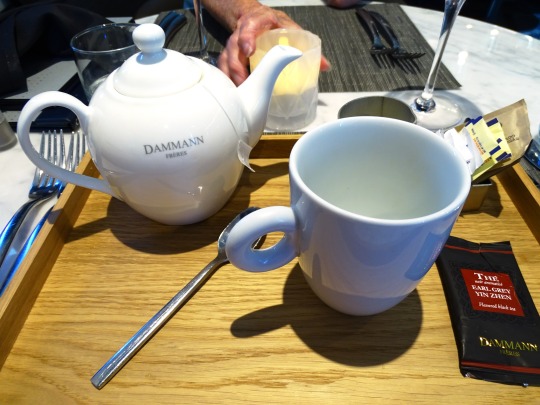

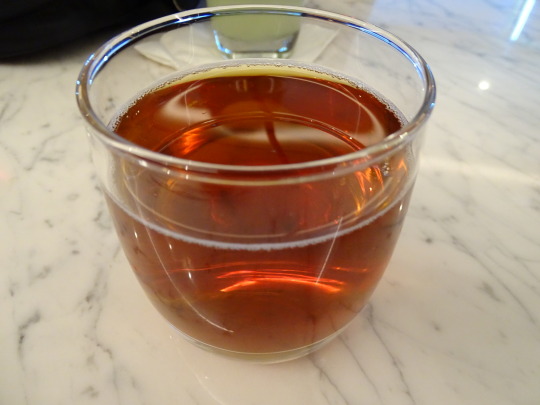






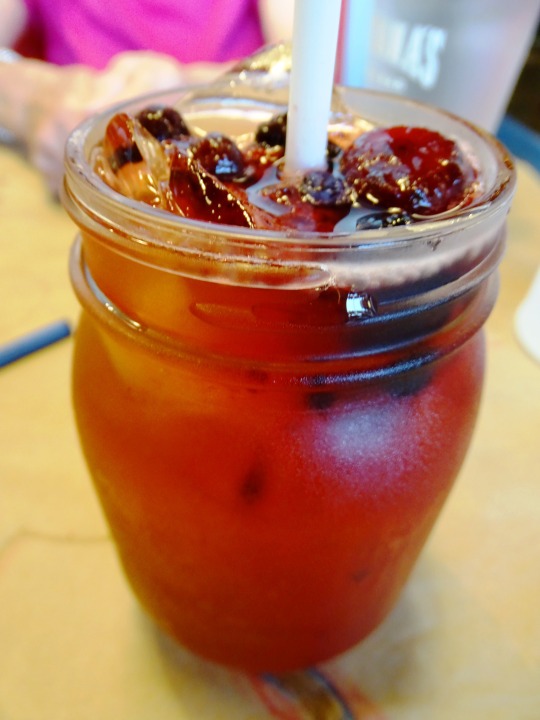




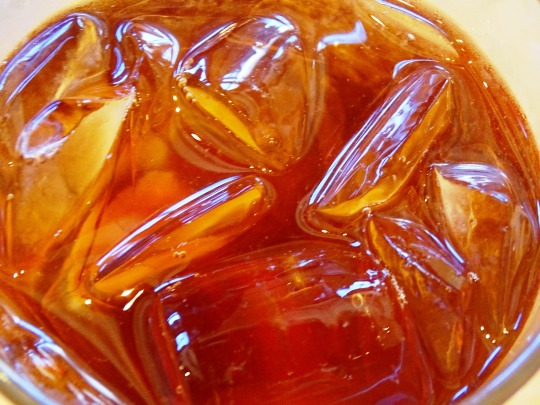

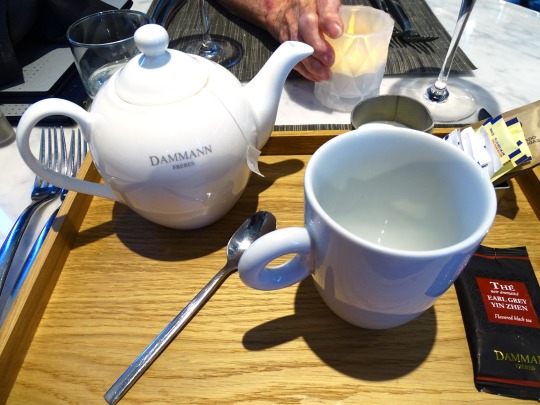






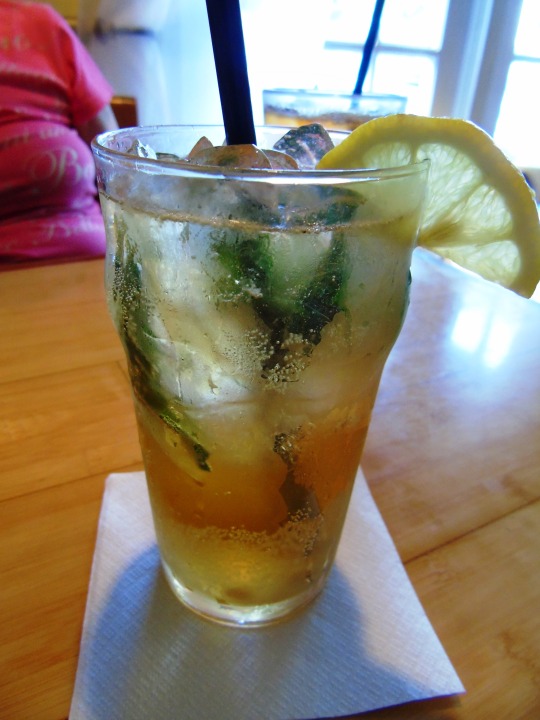




International Tea Day
While everyone loves a cup of tea, many of the workers and producers of that tea face poor conditions and pay. Help raise awareness and keep tea fair.
The tea industry provides millions of people around the world with cups of tea in the morning. One of the biggest producers of tea, India, recognizes the importance of tea in its communities and as a commodity for commerce.
However, much of the working conditions for those within the tea industry still need much improvement. If you think this holiday was about drinking tea, well think again! International Tea Day is all about the tea workers and bringing civil rights into action. Let’s see how this holiday came to pass.
Do you love a good cup of tea? While International Tea Day can certainly involve paying homage to tea, we should pay homage to those working in the tea industry. The best way to do this is by helping to raise awareness regarding their working conditions so they can be improved.
History of International Tea Day
The International Tea Day campaign was launched in 2005 by the trade unions, small tea growers and civil society organizations in Asia and Africa to address the issues of living wages for workers and fair prices for small tea producers.
The International Tea Conference in New Delhi came out with an International Declaration on the rights of workers and small growers to help regulate uneven competition, land ownership, safety regulations, rights of women, social security and living wages. Another organization, The Tea Board of India, proposed International Tea Day in hopes of it becoming an official holiday to the UN Food and Agriculture Organization.
This was proposed by chairman Santosh Kumar Sarangi in 2015. According to the chairman, the proposal of India was supported by countries such as Canada, the United States, European Union, Sri Lanka, China, Japan, Kenya, and Malawi. While the holiday doesn’t have official status, the goal of this holiday is to recognize the vulnerable situations that tea producers in India have with current living conditions and worker-related policies.
The day also focuses on deliberating on urgent issues such as residues, climate change, technology and trends on production and consumption in the tea industry. To observe this day, over 150 representatives from tea organizations gather and conduct a seminar to discuss the pervading problems the tea industry has as well as problems faced within their own country.
International Tea Day Timeline
2737 BC Tea is discovered as a beverage
Legend has it that Chinese Emperor Shen Nung is sitting beneath a tea tree while a servant boiled water for drinking. Some leaves fall into the cup and begin the practice of drinking what is now called “tea”.
1610 Tea comes to Europe
It is believed that the Dutch were the first to bring tea to Europe, just a few years prior to the introduction of coffee by Venetians.
1773 The Boston Tea Party occurs
With the intention of revolting against the high taxes levied by the British government without providing any voice, residents of Massachusetts throw tea into the Boston Harbor. “No taxation without representation” is the major complaint.
2004 International Tea Day is created
At the World Social Forum, International Tea Day is conceived and then celebrated the following years in New Delhi and Sri Lanka, then later in other tea-producing places like Nepal, Viet Nam, Bangladesh and others.
2019 United Nations adopts International Tea Day
After some years of advocating for its observance, International Tea Day is adopted by the United Nations General Assembly at the suggestion of the FAO Intergovernmental Group on Tea.
How to Celebrate International Tea Day
If you’re a lover of tea, then do some research about some of your favorite companies. Try looking up tea brands that support fair trade, and possibly switch to those brands to make a difference in the way you buy products such as tea. Use the hashtag #internationalteaday to help recognize it as an official holiday and educate others about the tea industry if you’re interested.
You could also use International Tea Day to try a variety of tea you have never had before. Matcha, for example, is highly popular as of late. You need to shop with care, though! The first thing you need to take a look at is how the Matcha has been produced and sourced.
You need to ensure that all veins and stalks have been removed so that there is not any bitterness and only the finest leaves should be used. Secondly, the color of the matcha powder is a significant factor. The greener the color is, the better. This is because the leaves are forced to overproduce chlorophyll because Matcha is shade-grown, which causes the vibrant green shade.
If the Matcha is yellow or brown in color, this is a sign that the leaves have not been properly shaded or that branches and stalks have been included. The price is the third factor to consider. Like most things, if you want quality, you can expect to pay a little bit more.
If something seems too good to be true, the chances are that it is. The feel of Matcha is also important. It should be a fine powder that is very silky. Last but not least, the taste is obviously a crucial attribute when it comes to quality. It should have a clean and naturally sweet taste.
Why not make some delicious baked green tea treats on International Tea Day and have a bake sale to raise money and awareness regarding working conditions in the tea industry? Green tea recipes are available in their abundance. People are actively searching for different ways to enjoy green tea. While green tea is delicious when simply mixed with hot water, there is nothing wrong with switching it up from time to time, especially on International Tea Day!
An easy and delicious recipe is Matcha Meringue Kisses. To make this you will need Matcha, sugar, egg whites, and powdered sugar. Begin by sifting together the Matcha and the powder sugar, and then whip the egg whites until they have soft peaks. Gradually add the sugar and whip until stiff peaks. Gently fold the Matcha into this mixture and then transfer to a pastry bag. Pipe the mixture into small kisses onto a baking tray and then bake for around an hour.
Or, why not make Green Tea Donuts? For this, you need green tea, honey, melted butter, milk, egg, salt, baking powder, sugar, and cake flour. You whisk the green tea, salt, baking powder, sugar, and flour. Add the honey, melted butter, milk, and egg, and then whisk. Use a pastry bag to pipe the batter into the mould. Then, simply bake the donuts for eight minutes. You can make your own glaze to go on the top – chocolate goes well!
Other delicious baked treats to try include green tea muffins, brownies and shortbread!
International Tea Day FAQs
What is International Tea Day?
Created to celebrate and pay tribute to the countries that produce tea to supply to the world, starting in India and moving to other places like Sri Lanka, Malawi, Uganda, Bangladesh, Vietnam and more.
When was International Tea Day first celebrated?
International Tea Day first got its start in 2004 when it was celebrated in New Delhi. It grew over the years and by 2019 the day was adopted by the United Nations General Assembly.
How to celebrate International Tea Day?
A great way to observe this day is by learning a bit more about the nations who produce tea for the world. Also, don’t forget to order a cup of fair trade tea for one, or take a friend out to enjoy a cuppa together.
What is the theme of International Tea Day?
The theme for this day devoted to tea producers changes each year, but some of the past themes have included themes such as Tea and Fair Trade or Harnessing Benefits for All from Field to Cup.
When is International Tea Day celebrated?
Taking place on May 21 of each year, International Tea Day originally took place on December 15 from 2005 when it was often only celebrated by tea-producing countries. It changed to May 21 when the UN adopted the day.
Source
#Earl Grey#Earl Grey Tea is my favorite tea#Computer tea Earl Grey hot#USA#I don't like coffee#I only drink tea#original photography#always unsweetened#Lemon Black Tea Lemonade#Tropical Ice Tea#Peach Green Tea#Lavender Ice Tea#Pineapple Black Tea#Strawberry White Tea#Peach Citrus Green Tea#International Tea Day#21 May#InternationalTeaDay#travel#vacation#Capilé#Portugal#Women are Persons By Barbara Patterson#Tea Earl Grey Hot#Spiked Texas Tea#Lemon Black Tea
2 notes
·
View notes
Text
instagram
For the longest while we jamming in the party
And you whining on me
Pushing everything
Right back on top of me, yeah
But if you think you're gonna get away from me
You better change your mind
You're going home
You're going home with me tonight
Let me hold you
Girl, caress my body
You got me going crazy, you
Turn me on
Turn me on
Kevin Lyttle - Turn Me On
My problem with dance music is that they sneak toxic lyrical content under these fun beats and us dancing to it is us approving the message, consciously or subconsciously subscribing to the harmful ideology that produces such behaviour and attitude towards others.
Regaaeton, Hip hop, Rnb, Ndombolo, many more genres and styles, they sound good but say things that I dont condone. It makes me stand up straight, make a grimace in disgust and I enjoy the song less to the point where I stop listening to most artists . Sometimes I am handpicking secular music , sometimes I ditch it entirely for Christian Hip Hop with great sound! Because a lot has improved since the mid-10s when I first gave Christian Hip Hop a chance to evade "Illuminati music". But the sound wasnt my cup of tea, the wordplay was too simple and the emotions in me weren't stirted up enough by this tame and timid music. God is the Lion of Juda, but the lion who seeks to devour sheep seemingly had all the good music. Now I know that I will always have Congolese christian music and international gospel from Kenya or the USA (whether it's Kirk Franklin/Mary Mary, Gospel groups, choirs or hillsong). But what about music with beats and rhymes? What about riffs and runs in music that you dont pray to? Cant you surround ourselves with God's music throughout the whole day?
I am happy to see the improvements and progress of Christian hip hop amd Christian Rnb. I am a new fan of many artists ,some of which are active in the ministry through song or as youth pastor who deveral years already.


I can share the songs I like andnthe artists that I discovered since my rediscovery.
Still, some model their sound a lot after secular templates and trends (a christian Drake, Eminem, J cole or Kendrick Lamar).
Same goes for singers who sound like male or female rnb singers or pop stars in the secular music industry.
Some like this "Pendant" music because their listening habits dont really have to change . But I prefer individuals with own sounds and words and a drive snd a vision that is 1 of 1.
The souls still being reached and saved, so the main focus is the world of unbelivers for some artists who want to evangelize through their music.
Next year, I'll share my christian music that I created as an Artist in the form of albums.
While I must admit that Jesus came to heal and save us and not to enjoy the company of the righteous, I feel like we need music to goes deeper into the reality of thebfaith and the mystery of the Word of God. I want to make music for the believers who want to go forward and get even closer to God after being saved and called Child Of God.
What do you do after you give your life?
What can you learn in the Bible?
How can youblive a fulfillingsoirtual life?
How tonresolve inner conflicts by having worldly ambitions, sinful flesh and temptations by Satan?
How to repent and rededicate yourself to Christ?
And many more questions about how to live as a christian and think about God, Christ Jesus and the Holy Spirit.
I want to help us with what I have learned from my father who is a Pastor and what my life experiences as lifelong Christian have informed me with. I will heal and deepen my own faith as me making Christian art and deciding to share my testimony forces me to reflect on my actions and the longings of my heart and desires of the flesh. So maikng Christian music is not to brag about my Holiness, but a reminder of my human flaws and virtues, my values and vision, and above God's faithful love for his imperfect child.
Here are few videos of my Christian music:
youtube
youtube
youtube
#christian music#hiphop#producer#musician#christian blog#independent artist#writer#faith#chh#christian hiphop#lyrics#Instagram#Youtube
2 notes
·
View notes
Text

Oh! There It Is!
Of Course The MSM Like Google Maps & Wikipedia Don't Show It! Just In Case This Get's Taken Down Here's The Whole Article!
The existence or non-existence of a place called “Hawaii, Kenya” is an interesting geographic question that many people may have wondered about before.
At first glance, it may seem unlikely that such a place exists, since Hawaii and Kenya are separated by thousands of miles of ocean. However, a deeper dive reveals that there is in fact a locale in Kenya with the unusual name of “Hawaii”. Keep reading to learn all about this uniquely named village in the Kenyan countryside.
If you’re short on time, here’s a quick answer: There is indeed a small village called Hawaii located in Kenya’s Rift Valley province. It was given this name due to its physical resemblance to the Hawaiian islands.
The Origins of Hawaii, Kenya How the Village Got Its Name The name “Hawaii” may bring to mind images of beautiful beaches and tropical paradise, but did you know that there is also a village named Hawaii in Kenya? The origins of the name can be traced back to the early colonial era when British settlers arrived in the area.
The village was named after the Hawaiian Islands, which were gaining popularity at the time due to their exotic appeal.
The settlers were inspired by the natural beauty and cultural richness of Hawaii, and they wanted to bring a touch of that enchantment to their new home in Kenya. Thus, the village of Hawaii was born.
Geographic Location and Description The village of Hawaii is located in the western part of Kenya, in the Nandi County. It is situated in the highlands region, surrounded by lush green landscapes and rolling hills.
The village is known for its picturesque scenery, with breathtaking views of tea plantations and expansive fields. The climate in Hawaii is generally mild, with warm temperatures throughout the year.
The village is home to a vibrant community, with residents engaged in agriculture, particularly tea farming.
The village of Hawaii in Kenya may not be as well-known as its namesake in the Pacific, but it has its own unique charm and beauty.
If you ever find yourself in the western part of Kenya, make sure to pay a visit to Hawaii and experience its natural wonders and warm hospitality.
Life in Hawaii, Kenya When most people think of Hawaii, they envision a tropical paradise in the middle of the Pacific Ocean. However, there is also a place called Hawaii in Kenya, which offers a unique and fascinating experience.
Let’s take an in-depth look at the life in Hawaii, Kenya, exploring its local economy, livelihoods, community, and culture.
Local Economy and Livelihoods The economy of Hawaii, Kenya is primarily based on agriculture, with a focus on coffee and tea production. The region is known for its fertile soil and ideal climate, making it perfect for growing these crops.
The coffee and tea plantations not only provide employment opportunities for the local population but also contribute significantly to the country’s export industry.
Aside from agriculture, tourism is also an important sector in Hawaii, Kenya. The pristine beaches, coral reefs, and diverse wildlife attract visitors from all over the world.
This influx of tourists has led to the development of resorts, hotels, and other tourist-related businesses, providing additional job opportunities for the locals.
Furthermore, the fishing industry plays a vital role in the local economy. The coastal communities rely on fishing as a source of income and food security. The rich marine biodiversity in the area provides ample opportunities for fishermen to sustain their livelihoods.
Community and Culture The community in Hawaii, Kenya is known for its warm hospitality and strong sense of community. The locals take pride in their cultural heritage and are eager to share it with visitors. Traditional dances, music, and art are an integral part of their daily lives, showcasing the vibrant and diverse culture of the region.
The community also places great importance on sustainable practices, particularly in relation to their natural resources. Conservation efforts are in place to protect the environment and preserve the unique ecosystems found in Hawaii, Kenya.
This commitment to sustainability not only benefits the local community but also contributes to the preservation of the region’s natural beauty for future generations.
Visiting Hawaii, Kenya offers a wonderful opportunity to immerse oneself in a different way of life. Whether it’s exploring the lush coffee plantations, enjoying the stunning beaches, or experiencing the rich cultural traditions, Hawaii, Kenya has something to offer for everyone.
For more information about Hawaii, Kenya, you can visit the official website of the Kenya Tourism Board: https://www.magicalkenya.com/.
2 notes
·
View notes
Text
Kenya’s Foreign Direct Investment (FDI) Landscape
Kenya has been a significant recipient of foreign direct investment (FDI) in recent years, which has played a crucial role in driving its economic growth and development. Investors are attracted to Kenya’s strategic location, growing market, and favorable business environment.
Key Sectors Attracting FDI:
Agriculture: Kenya’s agricultural sector has been a major draw for foreign investors, particularly in areas such as horticulture, tea, and coffee.
Manufacturing: The manufacturing sector, especially food processing, textiles, and pharmaceuticals, has seen a surge in FDI.
Tourism: Kenya’s world-renowned tourism industry continues to attract significant foreign investment, particularly in hospitality and infrastructure development.
Energy: The country’s renewable energy sector, including geothermal and solar power, has been a focus of FDI.
Information and Communication Technology (ICT): Kenya’s growing ICT sector has attracted foreign investors interested in mobile services, internet infrastructure, and software development.

Benefits of FDI for Kenya:
Job Creation: FDI has contributed to job creation in various sectors, reducing unemployment rates.
Technology Transfer: Foreign investors often bring advanced technology and expertise to Kenya, enhancing local capabilities.
Infrastructure Development: FDI has supported the development of essential infrastructure, such as roads, railways, and energy facilities.
Market Access: Foreign investors can help Kenyan businesses gain access to new markets and expand their exports.
Economic Diversification: FDI can contribute to economic diversification, reducing reliance on a few sectors.
0 notes
Text
Best Dairy Farm - Kuber Dairy in kenya
Your Gateway to Excellence and Premium Dairy Products Kenya, with its breathtaking landscapes and fertile lands, boasts some of the best dairy farms in Africa.
Kuber Dairy is one of the premier examples of excellence in dairy farming and production. Whether you want the Best Dairy Farm in Kenya or great dairy products that meet sustainable production standards, Kuber Dairy has everything it takes to meet your needs.
The following is why Kuber Dairy is the Best Dairy Farm in Kenya. Quality, health, and community are the bedrock of Kuber Dairy’s success. As the best dairy farm in Kenya, Kuber Dairy has set the pace for quality and excellence. Kuber Dairy’s products are known for their unmatched purity and nutrient content. Quality Sustainability.

Are you looking for the Best Dairy In Kenya?
You can still enjoy the products while promoting the environment. By patronizing Kuber Dairy, you play a vital role in promoting sustainable farming, which guarantees food security during extreme weather and farming conditions.
Innovation Kuber Dairy operates with innovation as its guiding principle. Kuber Dairy is continuously investing in research and development to create new and improved products. Whether developing fortified milk products for added nutrients or creating other dairy-based foods, Kuber Dairy is always on the leading edge of the dairy industry
Community Kuber Dairy values the community that has helped it grow. We support local health, education, and development programs. Additionally, Kuber Dairy provides jobs and empowers local dairy farmers. Kuber is the leading dairy in Kenya, and we must maintain our status. Products That Made Kuber Dairy the Best Dairy in Kenya Kuber Dairy’s product spread all addresses the different needs of Kenyan homes and businesses.
1. Fresh milk powder: Our fresh milk powder is obtained from well-conditioned cows. This milk is a staple for many Kenyan homes, given all the nutrients needed, such as calcium, proteins, and vitamins, for our day-to-day activities. It is the priority for many Kenyan families as health and wellness become essential considerations.
2. UHT Milk Our Ultra Heat Treated half milk, which can stay long without refrigeration, gives our customers rare, tasteful drinking milk that assures quality even without refrigeration. It is sweet and perfect for children’s milkshakes and family tea.
3. Butter and Ghee: Kuber Dairy butter and ghee are made from Pure cream to give it a rich, creamy taste and fine texture. Ideal for cooking, baking or spreading on your best bread slice.
How to Select the Best Dairy Farm for Your Requirements
The best dairy farming should not be based on the above products only; instead, consider the following:
1. A good reputation from the community: Kuber Dairy has established a strong brand name in Kenya. This is because of the quality products offered by our farmers, which makes customers trust us because they know the best is in our hands.
2. Our diversified products: Fresh milk, yoghurt, cheese, butter-you name them; Kuber Dairy has everything for everyone. As long as you are our customer, you have ensured that all your dairy needs are packed together.
3. Ethical practices: We promote eco-friendly behaviour by ensuring that our farming practices do not harm the environment. Our animals are raised under the highest conditions of ethical farming. This is what our customers have noted, as they are mindful of where their food comes from.
4. Continual innovation and quality control: We innovate all the time to ensure that the quality of our products is improved. Quality control measures have ensured that every Kuber Dairy product that comes out of our farm reaches our customers with safety guaranteed and nutrition fixed.
In conclusion, choose the opportunity to experience the Best Dairy in Kenya with Kuber Dairy. Kuber Dairy is not only a brand of quality dairy products but a symbol of quality, sustainability, and community. Choose Kuber Dary and see how buying the Best Dairy in Kenya is equivalent to investing in your health and the world around you.
We cater to a broad client segment, from businesses looking to secure reliable dairy suppliers to families seeking to have healthy and tasty dairy products to Kuber Dairy, the Best Dairy in Kenya. Check out our official webpage for the complete catalogue of dairy products that we offer to our esteemed customers. Like no other dairy brand in the country, we promise nothing other than the best for you.
1 note
·
View note
Text
Top 5 Interesting Facts about Kenya
Kenya, a vibrant East African nation, is a land of extraordinary contrasts and rich heritage. From its diverse cultural tapestry, featuring over 40 ethnic groups each with their own unique traditions, to its breathtaking landscapes that range from lush highlands to arid deserts, Kenya offers a wealth of fascinating experiences. Known as the "Cradle of Humanity," it boasts significant archaeological finds that trace the early origins of humanity. The country is also renowned for its incredible wildlife, including the iconic "Big Five" and the awe-inspiring Great Migration. Kenya's geographical marvels, such as Mount Kenya and the Great Rift Valley, add to its allure. Additionally, its thriving coffee and tea industries contribute significantly to its economy and cultural identity. This blend of historical significance, natural wonders, and cultural richness makes Kenya an extraordinary destination full of captivating stories and discoveries.

Here are some interesting facts about Kenya.
1. Rich Cultural Diversity:

Kenya has over 40 distinct ethnic groups, making it a cultural melting pot. Each tribe has its own traditions, languages, and customs. The main groups are the Kikuyu, Luo, Luhya, and Maasai. This cultural richness is honoured with lively festivals, music, dance, and art. For example, the Maasai are famed for their vibrant beading and traditional dances, while the Kikuyu have a rich oral storytelling heritage. Kenya's cultural diversity makes it an intriguing location for anyone interested in learning about other ways of living.
2. The birthplace of human civilization:
Kenya is frequently referred to as the "Cradle of Humanity" due to its extensive archaeological heritage. The country is home to some of the world's most important fossil sites. For example, the Laetoli footprints discovered in northern Kenya provide evidence of early human bipedalism. These footprints, which date back approximately 3.6 million years, provide important insights into the evolution of human walking. Furthermore, the Turkana Basin has generated numerous major fossil finds, aiding our understanding of early human predecessors.
3. Incredible wildlife diversity:

Kenya is well-known for its rich wildlife, making it a popular safari destination. The country's diverse ecosystems, which range from savannahs and forests to wetlands, provide habitat for a vast variety of species. Kenya is home to the "Big Five": lions, leopards, elephants, buffaloes, and rhinoceros. The annual Great Migration in the Maasai Mara, in which millions of wildebeest, zebras, and gazelles migrate in search of water and food, is one of nature's most stunning phenomena. Kenya's national parks and reserves, including Amboseli, Tsavo, and Nairobi National Park, are excellent spots for animal viewing.
4. Unique Geography:

Kenya's terrain is quite diverse, spanning from mountainous highlands to lowland deserts. Mount Kenya, Africa's second-highest mountain after Mount Kilimanjaro, is a prominent landmark and a UNESCO World Heritage Site. It provides excellent trekking opportunities and is noted for its rich flora and fauna. In contrast, the Great Rift Valley, a prominent geological formation that spans through Kenya, has stunning scenery such as lakes, escarpments, and volcanic peaks. This valley is a hub for geological and biological research.
5. A thriving coffee and tea industry:
Kenya is well-known for its high-quality coffee and tea, which are key export commodities. The country's coffee, farmed primarily in the highlands, is renowned for its rich flavor and fragrant properties. Kenyan coffee is frequently described as having a fruity, wine-like flavor. Similarly, Kenyan tea is well-known for its robust flavor and is an integral part of the local culture. The tea estates in Kericho and Nandi Hills are among the most productive in the world. Coffee and tea are important parts of Kenya's economy and cultural identity.
Conclusion:
Kenya stands out as a captivating destination with its remarkable cultural diversity, historical significance, and stunning natural landscapes. From the rich traditions of its numerous ethnic groups to the awe-inspiring wildlife and geological features, Kenya offers a unique blend of experiences that appeal to travelers and researchers alike. The country's role as the "Cradle of Humankind" highlights its importance in understanding human evolution, while its vibrant coffee and tea industries reflect its economic vitality. For those planning to explore these fascinating aspects of Kenya, obtaining a Kenya visa��is a crucial step in preparing for a memorable journey. With its breathtaking safaris, vibrant cultural heritage, and significant historical sites, Kenya promises an enriching experience for visitors seeking to immerse themselves in one of Africa's most diverse and intriguing nations.
0 notes
Text
Rise of Tea Export from India: A Statistical Analysis

Tea is a globally cherished beverage, whether it's Turkish Oralet, Assamese, or Moringa ole from Egypt. In India, a day often begins with a cup of tea, a tradition echoed worldwide where tea serves as an immune booster, energizer, relaxant, and social drink. By 2022, India had dedicated 6.19 lakh hectares to tea cultivation, with 80% of its domestic production, marking it as one of the top tea-consuming nations globally.
However, the true origins of tea lie in India's regions like Nilgiris, Darjeeling, and Assam, renowned for their premium taste and distinctive quality. This article delves into the rising trend of tea exports from India, providing detailed market insights, export data, and highlighting top Indian tea exporters. Let's explore this fragrant journey together.
Why Are Tea Exports from India Profitable?
India stands as the world's second-largest tea producer. Several factors contribute to the profitability of Indian tea exports:
High Production Volume: Historically, over 80% of mid-20th century Indian tea production was destined for the global market.
Strong Industry Structure: The Indian tea industry is robust, with a well-organized system encompassing growing, processing, trading, and exporting.
Economic Contribution: Tea cultivation significantly impacts the Indian economy, contributing to GDP and providing extensive employment opportunities.
Diverse Tea Regions: Key tea-producing regions include Assam, Darjeeling, Nilgiri, Kerala, Tamil Nadu, and West Bengal, each offering unique flavors and varieties.
Top Tea Producing Countries
The leading tea-producing nations in 2022 were:
China leads the world in tea production with an impressive output of 2.2 million tonnes. India follows as the second-largest producer, contributing 1.2 million tonnes to the global market. In third place is Kenya, with a production of 432,000 tonnes, while Sri Lanka ranks fourth with 340,000 tonnes. Vietnam and Turkey are close contenders, producing 214,000 tonnes and 212,000 tonnes respectively. Iran comes next, with a production of 160,000 tonnes, followed by Indonesia at 148,000 tonnes. Argentina produces 105,000 tonnes, securing the ninth spot, and Japan rounds out the top ten with an output of 85,000 tonnes.
Major Types of Tea Exported from India
India exports various types of tea, each with unique characteristics:
Black Tea: Dominates Indian tea exports, especially varieties from Assam, Darjeeling, and Nilgiri, known for their robust flavors.
Green Tea: Though less exported than black tea, green tea is gaining popularity due to its health benefits and refreshing taste.
Oolong Tea: A semi-oxidized tea combining elements of green and black tea, growing in popularity in some international markets.
For accurate and updated data on tea exports from India, including suppliers and export data, Eximpedia.app is a reliable resource.
India Tea Export Data: 2023-24
Preliminary statistics for January 2024 highlight the following:
All India:
Quantity exported: 20.10 M.kgs
Value: Rs. 499.50 crores
Unit price: Rs. 24.85/Kg
Comparison with January 2023:
Quantity exported decreased by 2.19%.
Export value fell by 10.45%.
Unit price dropped by 8.45%.
Top Tea Exporting Countries
Here are the major tea exporting countries, highlighting India's position:
In terms of export value, China leads the list with an impressive $2.1 billion, making it the top exporter. Kenya follows as the second-largest exporter, with an export value of $1.2 billion. Sri Lanka ranks third, with exports amounting to $732.4 million. India comes in fourth place with exports valued at $687.9 million. Poland secures the fifth spot with an export value of $262.8 million, closely followed by Germany, which has exports worth $242.5 million, placing it in sixth position. Japan ranks seventh with an export value of $189.9 million. The United Arab Emirates (UAE) ranks eighth with exports totaling $152.2 million. The United Kingdom (UK) is ninth with exports valued at $135.7 million, while Vietnam completes the top ten list with an export value of $130.7 million.
Key Destinations for Indian Tea Exports
India exports tea to over 25 countries. The primary destinations include:
Russia
Iran
UAE
USA
UK
Germany
China
During 2021-2022, India exported significant quantities to Russia (32.5 million kg), Ukraine (1.68 million kg), and Kazakhstan (6.48 million kg). The CIS countries collectively received 42.5 million kg, constituting 21% of total exports. The US, UAE, and Iran also ranked among top importers, with exports valued at $277.3 million.
Leading Tea Importing Countries
In 2022, global tea imports amounted to $6.62 billion, with the top 10 importing countries accounting for 61.3% of this value:
China leads the world in tea production with an impressive output of 2.2 million tonnes. India follows as the second-largest producer, contributing 1.2 million tonnes to the global market. In third place is Kenya, with a production of 432,000 tonnes, while Sri Lanka ranks fourth with 340,000 tonnes. Vietnam and Turkey are close contenders, producing 214,000 tonnes and 212,000 tonnes respectively. Iran comes next, with a production of 160,000 tonnes, followed by Indonesia at 148,000 tonnes. Argentina produces 105,000 tonnes, securing the ninth spot, and Japan rounds out the top ten with an output of 85,000 tonnes.
Finding Top Tea Exporters in India
To discover leading Tea exporters in India, visit Eximpedia, a comprehensive data-driven platform. Eximpedia provides authentic, current international trade information for over 130 countries. It offers extensive data on tea exports, including HS codes and detailed export statistics.
Conclusion
Global tea production and consumption are poised to grow over the next decade, driven by rising demand in emerging markets like China, India, and Japan. While entering the global tea market may seem challenging, it offers rewarding opportunities. Leveraging platforms like Eximpedia can help transform local expertise into a successful international venture. For any queries regarding tea exports from India, visit Eximpedia.app and schedule a free live demo today!
#Tea exports from India#India tea export#tea exporting countries#Tea exporters in India#Tea exporters#top tea exporters in india
0 notes
Text
Boosting Kenya's Economy: The Rise of Agriculture Exports
Kenya's agriculture sector has long been a cornerstone of its economy, providing employment, income, and sustenance for millions of Kenyans. In recent years, agriculture exports have gained significant momentum, becoming a vital driver of economic growth and development. As Kenya continues to expand its reach in the global market, understanding the dynamics and potential of agriculture exports is crucial for both policymakers and stakeholders in the industry.

The Backbone of the Economy
Agriculture accounts for approximately 34% of Kenya's Gross Domestic Product (GDP) and employs over 70% of the rural population. The sector is incredibly diverse, producing a wide range of crops and livestock. Among these, tea, coffee, horticultural products, and fresh flowers stand out as key export commodities that have put Kenya on the global map.
Tea: The Green Gold
Kenya is the largest exporter of black tea in the world, with the crop being a significant contributor to foreign exchange earnings. The favorable climate in regions like Kericho, Nandi Hills, and Limuru makes it ideal for tea cultivation. Kenyan tea is renowned for its robust flavor and high quality, making it a preferred choice in markets across Europe, Asia, and the Middle East. In recent years, value addition through packaging and branding has further enhanced its marketability and revenue generation.
Coffee: From Farm to Cup
Kenyan coffee is another prestigious export known for its rich aroma and distinct taste. Though its production volume is lower compared to tea, Kenyan coffee fetches premium prices in international markets. The high-altitude regions around Mount Kenya and the Aberdare Range provide the perfect growing conditions. Efforts to improve coffee production, processing, and marketing are ongoing, with initiatives to support smallholder farmers and enhance sustainability practices.
Horticulture: A Blossoming Sector
The horticultural sector, encompassing fruits, vegetables, and cut flowers, has witnessed remarkable growth. Kenya is the leading exporter of cut flowers to Europe, with over 70% of exports destined for the European Union. The sector's success is attributed to favorable climatic conditions, strategic geographical location, and significant investments in infrastructure and technology. Horticulture not only generates foreign exchange but also creates numerous jobs, especially for women and youth in rural areas.
Challenges and Opportunities
Despite the successes, Kenya's agriculture exports face several challenges. These include climate change, which threatens crop yields and quality; fluctuating global market prices; and stringent international standards and regulations. Additionally, inadequate infrastructure, such as poor roads and limited cold storage facilities, hampers efficient production and transportation.
However, these challenges also present opportunities for innovation and growth. Embracing modern agricultural practices, investing in research and development, and enhancing value addition are critical steps towards overcoming these hurdles. Strengthening partnerships with international markets and improving the policy environment can also boost competitiveness and sustainability.
The Future of Agriculture Exports
The future of Kenya's agriculture exports looks promising, with ongoing efforts to diversify export commodities and explore new markets. Initiatives such as the Kenya Export Promotion and Branding Agency (KEPROBA) play a pivotal role in marketing Kenyan products globally and supporting exporters.
Moreover, the adoption of technology and digital platforms is revolutionizing the sector. From precision farming to blockchain for traceability, these advancements are enhancing productivity, quality, and transparency in the value chain.

Conclusion
Agriculture exports in Kenya are undeniably a lifeline for Kenya's economy, driving growth, creating jobs, and ensuring food security. By addressing challenges and leveraging opportunities, Kenya can solidify its position as a global agricultural powerhouse. As the country navigates the complexities of the global market, continued investment and innovation will be key to sustaining and expanding its agriculture export success.
0 notes
Text
Turning Waste into Power: How Kenyan Tea Farmers are Benefiting from Tea Clippings Gasification
A Deeside-based waste-to-energy company has unveiled its role on a project that will use waste tea clippings to make greener power for Kenyan farmers. l-r: Emily Mutindi Mutua of IITA, Paul Willacy of CSS, Niel Schulz from United Nations Industrial Development Organization, and Aarti Shah of IITA at a tea plantation in Limuru highlands, Kenya. (Photo credit: CSS) Kenya produces £1bn of tea per…
#Agricultural Innovation#aquaculture#biochar in farming#biomass for energy#carbon capture in farming#carbon footprint reduction#circular economy in agriculture#Compact Syngas Solutions#emissions reduction#energy challenges in tea farming#energy security in agriculture#energy shortages in Kenya#energy-efficient farming#gasification technology#global tea brands sustainability#green energy for farmers#hydrogen from gasification#improving crop yields#Kenya Climate Innovation Center#Kenya tea factories#Kenyan tea industry#methane fuel#power solutions for farmers#renewable energy in Kenya#renewable energy solutions#Scope 3 emissions reduction#soil fertility improvement#sustainable energy#sustainable tea farming#syngas production
0 notes
Text
15 Business ideas you can start in the rich continent of Africa (Series 2).
hair care product kit for African natural hair: African women and men are lacking the right product to take care of their natural hair especially type 4C hair. African women tend to wear extensions and wigs to cover their natural hair, because there's little to no product that targets the African hair and that actually works for type 4C hair. You can make 6 figures by starting a African hair care product business today in Africa.
Franchise restaurant food business: people do not want to always cook food at home, sometimes they would like to eat out instead. you can make a lot of money by starting a franchising restaurant food business.
Chocolate bar business: Africa produces 70% of the world's cocoa beans, but they don't make their own chocolate. I urge you to start making chocolate bar from scratch today , and you will become successful no time.
Gold Jewelry business: Africa is the number one continent that produces gold, and once again they are not producing their own jewelries. so go ahead and start a gold jewelry business today and make millions.
Tailoring Business: Every city in Africa needs a nearby tailor, so you can make a lot money by starting a tailoring business today in your city.
farming equipments : African farmers use their hands to farm, they don't use tools to speed up the process in farming. south Africa is the 6th country that produces iron, but they don't produce farming equipment. farming tools are definitely needed in the farming industry in Africa. you can make and sell farming tools.
Beauty suppliers: Hair suppliers are always needed, they are usually high in demand in the beauty industry. you can start beauty suppliers in your city today.
Laundromat: Africans hand wash their clothes. hand washing clothes definitely takes a very long time to complete the process of washing clothes. start a laundromat in your city and make a lot of money.
Tea cafe: tea is the most popular beverage in Africa. Kenya ranks first in the production of tea. open a tea cafe in your city.
Cleaning crew business: some Africans are busy with work and so many things. they will need a break from cleaning the house sometimes. go ahead and start a cleaning crew business in your city.
Lane cutter: this business is very profitable and in high demand, people are always on a look out for this kind of business. start a lane cutting business in your city.
Movers company: People are always moving from one place to another. they definitely will need help with loading and unloading their belongings into the truck. start a movers company in your city.
Nanny business: It is very hard to find a babysitter. Africans go through a lot of stress to find a babysitter, why not save them time by starting a Nanny business in your city.
House plant store: plants definitely makes our environment look intriguing and it also makes our home more cozy and warm. start a house plant store in your city today.
Folding walker: there are so many elderly Africans that have the risk of falling. A folding walker is useful in maintaining balance for elderly people, manufacture a folding walker in your city today.
#business#Africanbusiness#bloggers#business ideas#motivation#african writers#black excellence#black entrepreneurship
1 note
·
View note
Text
The Dynamics of the Fashion Industry in Kenya - A Tapestry of Style, Culture, and Innovation
The fashion industry in Kenya has evolved into a vibrant tapestry that weaves together traditional influences, contemporary styles, and a burgeoning spirit of innovation. As the global spotlight increasingly turns towards African fashion, Kenya stands out as a key player in shaping the narrative of style and creativity on the continent.
A Rich Blend of Tradition and Modernity
The fashion industry in Kenya is a captivating blend of tradition and modernity. Designers draw inspiration from the rich cultural heritage of the diverse ethnic groups that call Kenya home. Traditional fabrics, such as the colorful Maasai shuka and kanga, are skillfully incorporated into contemporary designs, creating a unique fusion that reflects the country's identity.

Emerging Designers and Global Recognition
Kenya has become a breeding ground for emerging fashion talents who are making waves both locally and internationally. Young, dynamic designers are breaking new ground, introducing fresh perspectives to the fashion landscape. With a focus on sustainability and ethical practices, these designers are not only gaining recognition on the global stage but also contributing to the positive transformation of the fashion industry in Kenya.
The Rise of Fashion Events and Platforms
Fashion events and platforms in Kenya are playing a pivotal role in showcasing the country's creative prowess. From the Nairobi Fashion Week to the Fashion High Tea, these events provide a stage for both established and emerging designers to exhibit their collections. The growing popularity of these platforms not only nurtures local talent but also attracts attention from fashion enthusiasts and investors worldwide.
Innovations in Textiles and Production
Kenyan designers are spearheading innovations in textiles and production techniques. From experimenting with sustainable materials to incorporating technology into the design process, the Fashion Industry in Kenya is pushing boundaries. These innovations not only contribute to the uniqueness of Kenyan fashion but also position the country as a hub for creative experimentation within the broader African fashion landscape.
Fashion as a Catalyst for Economic Growth
Beyond aesthetics, the fashion industry in Kenya is recognized as a catalyst for economic growth. With a focus on empowering local communities, many designers collaborate with artisans and craftsmen, creating employment opportunities and preserving traditional skills. This approach not only fosters a sense of social responsibility but also contributes to the overall development of the Kenyan economy.

Looking Ahead: A Bright Future for Kenyan Fashion
As we look ahead, the future of the fashion industry in Kenya appears promising. The convergence of cultural richness, emerging talent, and a commitment to sustainability positions Kenya as a key influencer in the global fashion arena. The world is taking note of the unique stories woven into each Kenyan design, making the country a trendsetter in both style and substance.
The fashion industry in Kenya is not just about clothing; it's a dynamic expression of culture, innovation, and economic empowerment. From traditional influences to cutting-edge designs, Kenya's fashion scene is a testament to the country's ability to blend the old with the new, creating a narrative that resonates on runways around the world.
0 notes
Photo










International Tea Day
While everyone loves a cup of tea, many of the workers and producers of that tea face poor conditions and pay. Help raise awareness and keep tea fair.
The tea industry provides millions of people around the world with cups of tea in the morning. One of the biggest producers of tea, India, recognizes the importance of tea in its communities and as a commodity for commerce.
However, much of the working conditions for those within the tea industry still need much improvement. If you think this holiday was about drinking tea, well think again! International Tea Day is all about the tea workers and bringing civil rights into action. Let’s see how this holiday came to pass.
Do you love a good cup of tea? While International Tea Day can certainly involve paying homage to tea, we should pay homage to those working in the tea industry. The best way to do this is by helping to raise awareness regarding their working conditions so they can be improved.
History of International Tea Day
The International Tea Day campaign was launched in 2005 by the trade unions, small tea growers and civil society organizations in Asia and Africa to address the issues of living wages for workers and fair prices for small tea producers.
The International Tea Conference in New Delhi came out with an International Declaration on the rights of workers and small growers to help regulate uneven competition, land ownership, safety regulations, rights of women, social security and living wages. Another organization, The Tea Board of India, proposed International Tea Day in hopes of it becoming an official holiday to the UN Food and Agriculture Organization.
This was proposed by chairman Santosh Kumar Sarangi in 2015. According to the chairman, the proposal of India was supported by countries such as Canada, the United States, European Union, Sri Lanka, China, Japan, Kenya, and Malawi. While the holiday doesn’t have official status, the goal of this holiday is to recognize the vulnerable situations that tea producers in India have with current living conditions and worker-related policies.
The day also focuses on deliberating on urgent issues such as residues, climate change, technology and trends on production and consumption in the tea industry. To observe this day, over 150 representatives from tea organizations gather and conduct a seminar to discuss the pervading problems the tea industry has as well as problems faced within their own country.
International Tea Day Timeline
2737 BC Tea is discovered as a beverage
Legend has it that Chinese Emperor Shen Nung is sitting beneath a tea tree while a servant boiled water for drinking. Some leaves fall into the cup and begin the practice of drinking what is now called “tea”.
1610 Tea comes to Europe
It is believed that the Dutch were the first to bring tea to Europe, just a few years prior to the introduction of coffee by Venetians.
1773 The Boston Tea Party occurs
With the intention of revolting against the high taxes levied by the British government without providing any voice, residents of Massachusetts throw tea into the Boston Harbor. “No taxation without representation” is the major complaint.
2004 International Tea Day is created
At the World Social Forum, International Tea Day is conceived and then celebrated the following years in New Delhi and Sri Lanka, then later in other tea-producing places like Nepal, Viet Nam, Bangladesh and others.
2019 United Nations adopts International Tea Day
After some years of advocating for its observance, International Tea Day is adopted by the United Nations General Assembly at the suggestion of the FAO Intergovernmental Group on Tea.
How to Celebrate International Tea Day
If you’re a lover of tea, then do some research about some of your favorite companies. Try looking up tea brands that support fair trade, and possibly switch to those brands to make a difference in the way you buy products such as tea. Use the hashtag #internationalteaday to help recognize it as an official holiday and educate others about the tea industry if you’re interested.
You could also use International Tea Day to try a variety of tea you have never had before. Matcha, for example, is highly popular as of late. You need to shop with care, though! The first thing you need to take a look at is how the Matcha has been produced and sourced.
You need to ensure that all veins and stalks have been removed so that there is not any bitterness and only the finest leaves should be used. Secondly, the color of the matcha powder is a significant factor. The greener the color is, the better. This is because the leaves are forced to overproduce chlorophyll because Matcha is shade-grown, which causes the vibrant green shade.
If the Matcha is yellow or brown in color, this is a sign that the leaves have not been properly shaded or that branches and stalks have been included. The price is the third factor to consider. Like most things, if you want quality, you can expect to pay a little bit more.
If something seems too good to be true, the chances are that it is. The feel of Matcha is also important. It should be a fine powder that is very silky. Last but not least, the taste is obviously a crucial attribute when it comes to quality. It should have a clean and naturally sweet taste.
Why not make some delicious baked green tea treats on International Tea Day and have a bake sale to raise money and awareness regarding working conditions in the tea industry? Green tea recipes are available in their abundance. People are actively searching for different ways to enjoy green tea. While green tea is delicious when simply mixed with hot water, there is nothing wrong with switching it up from time to time, especially on International Tea Day!
An easy and delicious recipe is Matcha Meringue Kisses. To make this you will need Matcha, sugar, egg whites, and powdered sugar. Begin by sifting together the Matcha and the powder sugar, and then whip the egg whites until they have soft peaks. Gradually add the sugar and whip until stiff peaks. Gently fold the Matcha into this mixture and then transfer to a pastry bag. Pipe the mixture into small kisses onto a baking tray and then bake for around an hour.
Or, why not make Green Tea Donuts? For this, you need green tea, honey, melted butter, milk, egg, salt, baking powder, sugar, and cake flour. You whisk the green tea, salt, baking powder, sugar, and flour. Add the honey, melted butter, milk, and egg, and then whisk. Use a pastry bag to pipe the batter into the mould. Then, simply bake the donuts for eight minutes. You can make your own glaze to go on the top – chocolate goes well!
Other delicious baked treats to try include green tea muffins, brownies and shortbread!
International Tea Day FAQs
What is International Tea Day?
Created to celebrate and pay tribute to the countries that produce tea to supply to the world, starting in India and moving to other places like Sri Lanka, Malawi, Uganda, Bangladesh, Vietnam and more.
When was International Tea Day first celebrated?
International Tea Day first got its start in 2004 when it was celebrated in New Delhi. It grew over the years and by 2019 the day was adopted by the United Nations General Assembly.
How to celebrate International Tea Day?
A great way to observe this day is by learning a bit more about the nations who produce tea for the world. Also, don’t forget to order a cup of fair trade tea for one, or take a friend out to enjoy a cuppa together.
What is the theme of International Tea Day?
The theme for this day devoted to tea producers changes each year, but some of the past themes have included themes such as Tea and Fair Trade or Harnessing Benefits for All from Field to Cup.
When is International Tea Day celebrated?
Taking place on May 21 of each year, International Tea Day originally took place on December 15 from 2005 when it was often only celebrated by tea-producing countries. It changed to May 21 when the UN adopted the day.
Source
#Earl Grey#Earl Grey Tea is my favorite tea#Computer tea Earl Grey hot#USA#I don't like coffee#I only drink tea#original photography#always unsweetened#Lemon Black Tea Lemonade#Tropical Ice Tea#Peach Green Tea#Lavender Ice Tea#Pineapple Black Tea#Strawberry White Tea#Peach Citrus Green Tea#International Tea Day#21 May#InternationalTeaDay#travel#vacation#Capilé#Portugal
3 notes
·
View notes
Text
Power Tools, Hand Tools, and Equipment | BOLD Industrial
Are you looking for world-class, superior brands in the fields of Industrial Power Solutions, Test Equipment, and Instruments, Power Tools, Safety or Protective Equipment? BOLD Industrial is the best online tools and home improvement store in Kenya and East Africa.

We are dealers, suppliers, and resellers of major brands in the following categories: hand tools, power tools, solar, lighting, specialised building materials, specialised hardware, DPM, personal protective equipment (PPE), power backup solutions, UPS, UPS Batteries, PLC, Test & Measurement, Safety Signs, gardening tools, tea harvesting machines, and ladders.

We offer a comprehensive range of tools and equipment catering to various needs. Our selection includes renowned brands such as Bosch, Stanley, Black & Decker, Siemens, Fluke, DeWalt, CAT, Pro'skit, JSP, 3M, Makita, INGCO, Total Tools, American Safety, Silverline, Rolson, Tolsen, Tuffix, Tripp-Lite, Honeywell, SKF, Mchai, Tramontina, Gaston, and Techno-Tank. Among our offerings are power tools, hand tools, outdoor equipment, gardening tools, welding equipment, measuring tools, PPEs, tool kits, electronics master kits, and heavy-duty tanks.

Bosch Power Tools, Bosch Accessories, Bosch Measuring Tools, Stanley Generators, and Gardening Tools are some of the featured categories within our product range. Whether you're looking for Black & Decker Hand Tools, DeWalt Power Tools, or Makita Tools, we have a diverse collection to meet your requirements. Our inventory extends to include SKF bearings, SKF V Belts, Mchai Tea Harvesting Machines, and a variety of UPS Batteries, showcasing our commitment to offering a comprehensive solution for a wide spectrum of needs.

In addition to individual tools and equipment, we also provide accessories, handling equipment, electrical equipment, pneumatic tools, and more. With top-notch brands and a diverse array of products, we aim to be your one-stop destination for high-quality tools and equipment across different categories and applications.

You can now conveniently and safely buy your favorite tools and equipment brands online at boldindustrial.co.ke. Visit us today!
1 note
·
View note